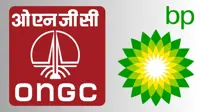Oil dips despite output curbs as market hopes for more
26 May 2017
The Organisation of Petroleum Exporting Countries and non-Opec oil producers led by Russia decided at their Vienna meeting on Thursday to extend production cuts by nine months to March 2018 as they battle a global glut of crude that has seen prices tumble and revenues drop sharply in the past three years.
Despite the cuts, oil prices dropped more than 4 per cent as the market had been hoping the oil producers could reach a last-minute deal to deepen the cuts or extend them further, until mid-2018.
The Opec cuts have helped to push oil back above $50 a barrel this year, giving a fiscal boost to producers, many of which rely heavily on oil revenues and have had to burn through foreign-currency reserves to plug holes in their budgets, Reuters reports.
Oil's earlier price decline, which started in 2014, forced Russia and Saudi Arabia to tighten their belts and led to unrest in some producing countries, including Venezuela and Nigeria.
The price rise this year has spurred growth in the US shale industry, which is not participating in the output deal, thus leaving global crude stocks still near record highs.
"We considered various scenarios, from six to nine to 12 months, and we even considered options for a higher cut. But all indications discovered that a nine-month extension is the optimum," Saudi Arabia's energy minister and OPEC president Khalid al-Falih said.
He told a news conference in Vienna he was not worried by what he called Thursday's "technical" oil price drop and was confident prices would recover as global inventories shrink, in part also due to declining Saudi exports to the United States.
In December, Opec agreed its first production curbs in a decade and the first joint cuts with 11 non-Opec producer nations, led by Russia, in 15 years.
The two sides decided to remove about 1.8 million barrels per day (bpd) from the market in the first half of 2017 - equal to 2 per cent of global production, taking October 2016 as the baseline month for reductions.
On Thursday, Opec and non-Opec producers agreed to extend cuts by the same 1.8 million bpd. The exact split between Opec and non-members will likely be different after Equatorial Guinea joined Opec on Thursday, reducing the number of participating non-Opec nations to 10.
Despite the output cut, Opec kept exports fairly stable in the first half of 2017 as its members sold oil from stocks.
Opec produces a third of the world's oil. Its production reduction of 1.2 million bpd was made based on October 2016 output of around 31 million bpd, excluding Nigeria and Libya.
Falih said Opec members Nigeria and Libya would still be excluded from cuts as their output remained curbed by unrest.
He also said Saudi oil exports were set to decline steeply from June, thus helping to speed up market rebalancing. He added that cuts could be extended further when Opec and non-Opec producers next meet in Vienna on 30 November.
"We have seen a substantial drawdown in inventories that will be accelerated," Falih said. "Then, the fourth quarter will get us to where we want."
Opec also faces the dilemma of not pushing oil prices too high because doing so would further spur shale production in the United States, the world's top oil consumer, which now rivals Saudi Arabia and Russia as the world's biggest producer.
.webp)



.webp)


.webp)

























